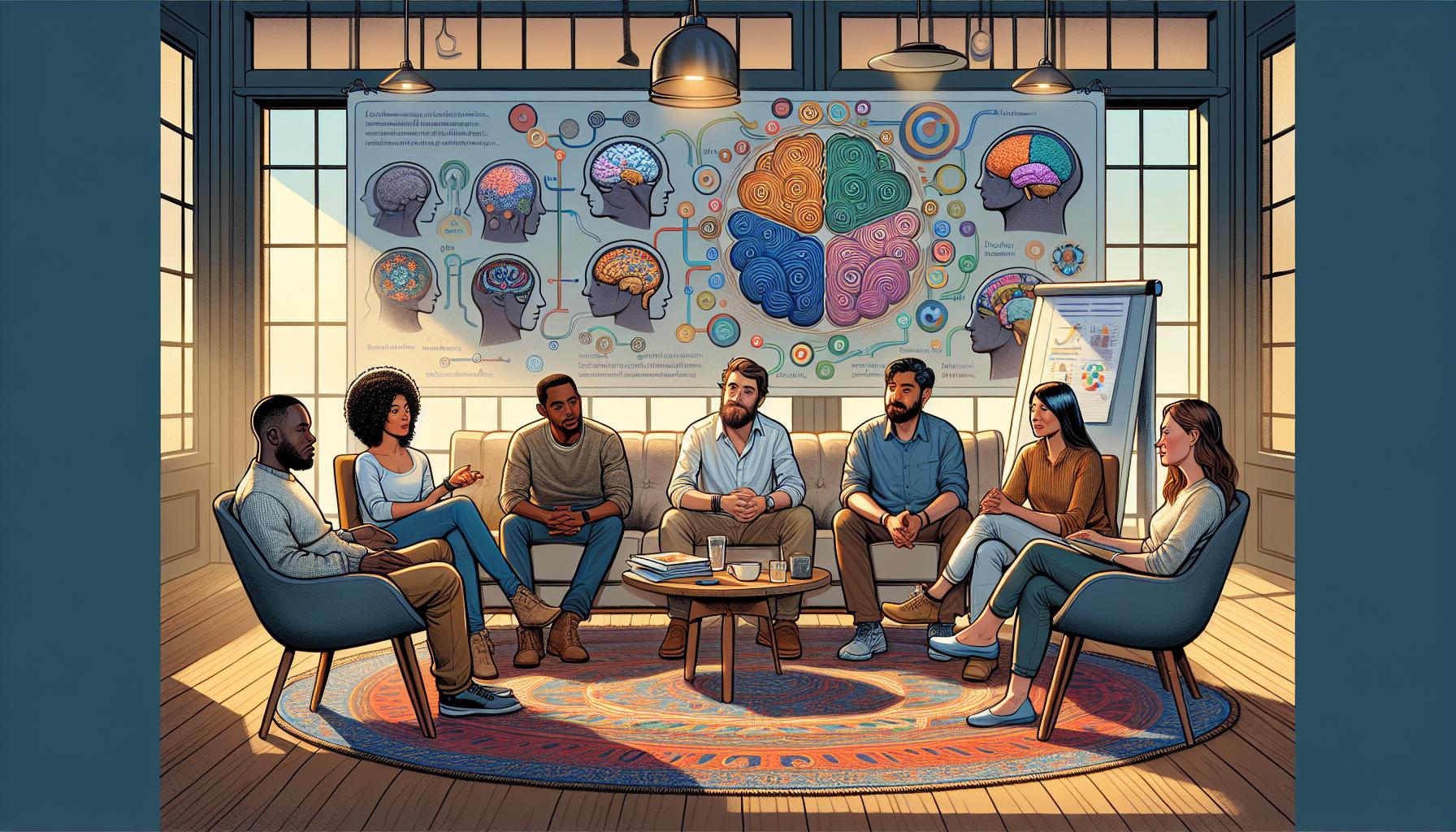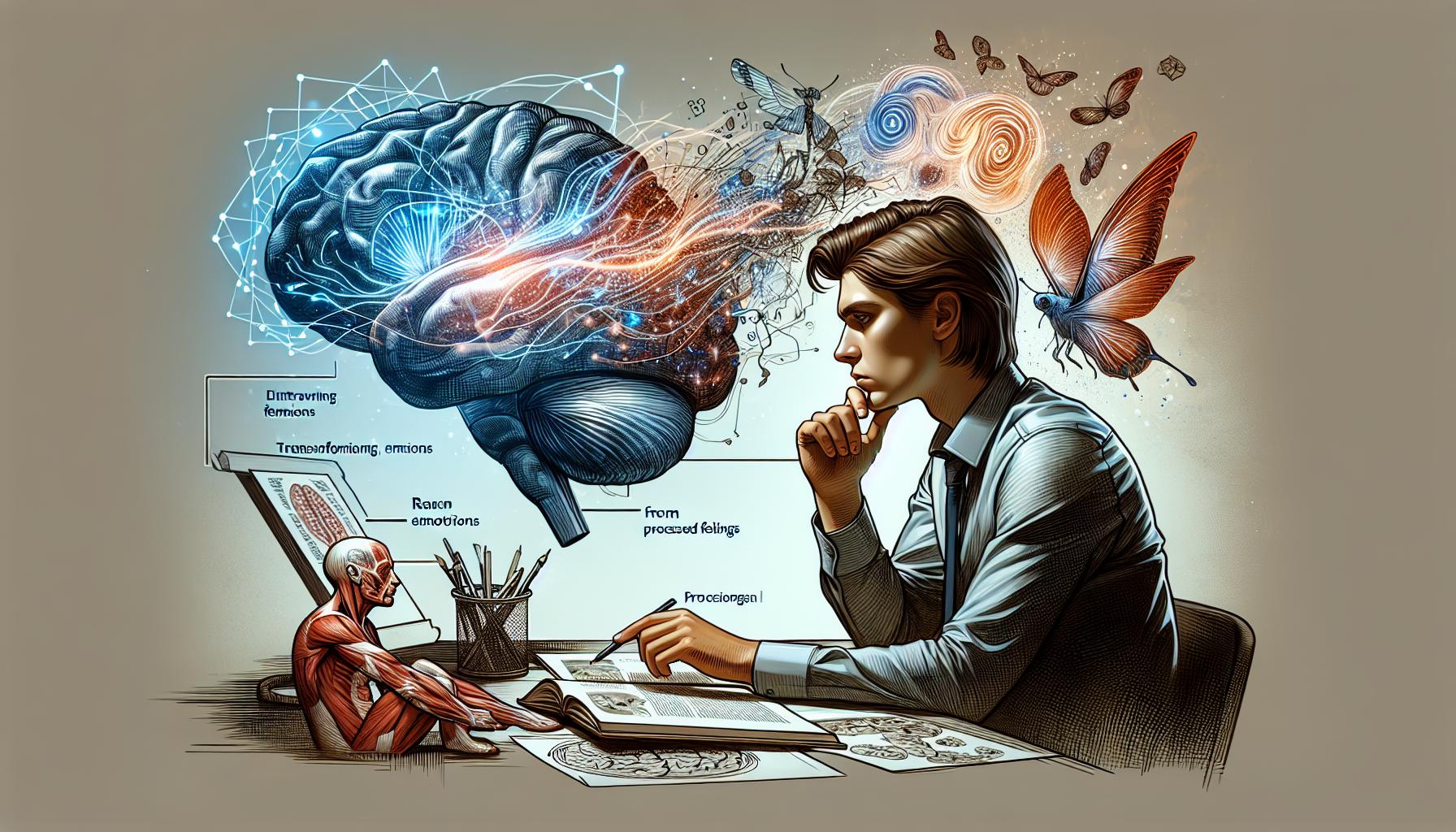Feelings and emotions form the core of human experience, yet many use these terms interchangeably. While closely related, they represent distinct aspects of how humans process and respond to the world around them.
Understanding the difference between feelings and emotions isn’t just an exercise in semantics – it’s crucial for developing emotional intelligence and maintaining mental well-being. Emotions are automatic neurological responses that evolved for survival, while feelings are the conscious interpretation of those emotional experiences. This distinction plays a vital role in how people navigate relationships, communicate effectively, and make decisions in their daily lives.
Understanding Feelings and Emotions: A Scientific Perspective
Scientific research demonstrates distinct differences between feelings and emotions through physiological responses and brain activity patterns. These differences help explain how humans process and experience various mental states.
Critical Differences Between Feelings and Emotions
- Emotions operate as automatic physiological responses triggered by external stimuli that create immediate bodily changes like increased heart rate or muscle tension
- Feelings emerge as conscious interpretations after emotional chemicals process through the body and brain
- Emotions manifest through universal facial expressions across cultures, particularly for basic states such as fear, anger, and surprise
- Feelings involve deeper cognitive processing influenced by personal thoughts, memories, and beliefs
- Emotions activate instantly as biological survival mechanisms, while feelings develop more gradually through mental awareness
- Emotions originate in the limbic system, particularly the amygdala, which processes immediate threat responses
- The prefrontal cortex engages when converting emotions into conscious feelings through cognitive analysis
- Neural pathways activate in this sequence:
- Stimulus detection
- Emotional response generation
- Physical reaction
- Conscious feeling awareness
| Brain Region | Primary Function |
|---|---|
| Amygdala | Processes emotional reactions |
| Prefrontal Cortex | Converts emotions to feelings |
| Limbic System | Generates automatic responses |
| Hypothalamus | Controls physiological changes |
The Physical Nature of Emotions

Emotions create distinct physiological responses through chemical reactions in the brain and body. The autonomic nervous system triggers these responses automatically, leading to measurable physical changes.
Universal Emotional Responses
Chemical reactions in specific brain regions generate emotional responses that remain consistent across cultures:
- The amygdala processes immediate threat detection, initiating fear responses
- Ventromedial prefrontal cortices regulate emotional intensity control
- Subcortical regions coordinate automatic physical reactions
- Neurotransmitters like dopamine and serotonin direct emotional states
- Hormones such as cortisol and adrenaline activate stress responses
- Heart rate increases during fear, anger, excitement
- Blood pressure elevates in response to stress
- Muscle tension develops, particularly in the neck, shoulders
- Breathing patterns shift, becoming rapidly shallow
- Digestive system alters affecting appetite metabolism
- Skin temperature changes, causing sweating and flushing
- Pupil dilation occurs during emotional arousal
| Emotion | Physical Response | Chemical Released |
|---|---|---|
| Fear | Heart rate increase | Adrenaline |
| Anger | Blood pressure rise | Cortisol |
| Joy | Muscle relaxation | Dopamine |
| Sadness | Energy decrease | Serotonin drop |
Feelings as Mental Experiences

Feelings represent the conscious interpretation and personal experience of emotions through mental processing. These cognitive interpretations emerge after an initial emotional response, creating a more complex and nuanced understanding of our emotional states.
The Role of Conscious Awareness
Conscious awareness transforms raw emotions into processed feelings through active mental engagement. The cognitive processing involves three key elements:
- Mental interpretation of physical sensations associated with emotions
- Recognition of the emotional state’s meaning in the current context
- Integration of past experiences with present emotional responses
Cultural Influences on Feelings
Cultural factors shape how individuals interpret and express their feelings in distinct ways:
- Language variations affect emotional vocabulary across cultures
- Social norms determine acceptable expressions of feelings
- Cultural values influence which feelings receive more attention or importance
- Traditional beliefs impact the interpretation of emotional experiences
- Community practices guide appropriate responses to emotional situations
The Connection Between Thoughts and Feelings

Thoughts are central to transforming emotional responses into conscious feelings through cognitive interpretation. The brain processes emotional signals in distinct stages:
Cognitive Processing
- Analyzing raw emotional data from physiological responses
- Comparing current experiences with stored memories
- Interpreting emotional signals based on personal beliefs
- Assigning meaning to physical sensations
Neural Integration
- The prefrontal cortex evaluates emotional stimuli
- The amygdala processes initial emotional responses
- Brain chemicals trigger physical reactions lasting 6 seconds
- Conscious awareness develops after an initial emotional surge
| Brain Region | Primary Function | Duration of Activity |
|---|---|---|
| Amygdala | Initial emotion processing | 6 seconds |
| Prefrontal Cortex | Cognitive interpretation | Minutes to hours |
| Subcortical Areas | Raw emotional reactions | Milliseconds |
- Converting bodily sensations into labeled feelings
- Incorporating cultural context into emotional understanding
- Developing personalized emotional responses
- Creating conscious interpretations of unconscious reactions
The cognitive process transforms chemical reactions into meaningful experiences through mental interpretation. This transformation enables individuals to recognize personal emotional patterns and integrate past experiences with present reactions.
How Emotions Transform Into Feelings

The transformation from emotions to feelings occurs through a distinct neurological process where automatic responses become conscious experiences. Chemical reactions in the brain trigger immediate physiological responses, which the conscious mind interprets as feelings.
The Transformation Process
- Initial Response
- The amygdala detects environmental stimuli
- Chemical reactions activate in the limbic system
- Automatic physiological changes begin
- Physical Changes
- Heart rate fluctuates
- Muscles contract or relax
- Breathing patterns shift
Conscious Interpretation
The brain processes emotional responses through specific pathways:
- Detection Phase
- Neural circuits identify emotional triggers
- The limbic system initiates chemical reactions
- Physiological responses activate
- Awareness Phase
- The conscious mind recognizes physical sensations
- The brain assigns meaning to emotional states
- Personal experiences shape interpretations
| Brain Region | Primary Function | Role in Transformation |
|---|---|---|
| Amygdala | Emotion Processing | Initiates automatic responses |
| Limbic System | Chemical Production | Generates emotional signals |
| Prefrontal Cortex | Conscious Interpretation | Converts emotions to feelings |
The transformation involves multiple brain areas working in coordination to process emotional stimuli. These areas communicate through neural networks to create conscious awareness of emotional states, resulting in identifiable feelings.
Subconscious emotional responses emerge into conscious awareness as the brain processes environmental cues. This progression enables individuals to recognize emotional states through physical sensations before conscious interpretation occurs.
Managing Both Feelings and Emotions
Managing emotional responses starts with recognizing the six-second duration of automatic emotional reactions. This recognition enables individuals to implement effective management strategies for immediate emotional responses and longer-lasting feelings.
Physical Management Techniques
- Practice deep breathing exercises to regulate the autonomic nervous system
- Engage in progressive muscle relaxation to release emotional tension
- Step away from triggering situations for 90 seconds to allow chemical reactions to subside
- Use physical movement to process emotional energy through walking or stretching
Cognitive Management Strategies
- Label emotions accurately to activate the prefrontal cortex
- Track emotional patterns in a daily log to identify triggers
- Challenge interpretations of emotional events through fact-checking
- Create space between stimulus and response through mindful pausing
- Monitor physical sensations when emotions arise
- Identify the emotional trigger or stimulus
- Observe the resulting feelings without judgment
- Apply appropriate management techniques based on intensity
| Response Type | Duration | Management Focus |
|---|---|---|
| Emotions | 6 seconds | Physical reactions |
| Feelings | Minutes to hours | Thought patterns |
| Integration | Ongoing | Both physical & mental |
This structured approach addresses the automatic chemical reactions of emotions and the conscious interpretation of feelings. Integrating physical and cognitive techniques creates a comprehensive management system that works with the brain’s natural processing patterns.
Summary
Understanding the difference between feelings and emotions is crucial for personal growth and emotional intelligence. While emotions are automatic physiological responses that evolved for survival, feelings represent our conscious interpretation of these responses, shaped by personal experiences and cultural influences.
This knowledge empowers individuals to better manage their emotional responses and develop healthier relationships. By recognizing that emotions are temporary and that feelings can be influenced through conscious awareness, people can build stronger emotional resilience and make more balanced decisions.
The complex interplay between our brain’s emotional and cognitive systems highlights the remarkable nature of human consciousness. With this understanding, anyone can work toward better emotional regulation and enhanced mental well-being.



